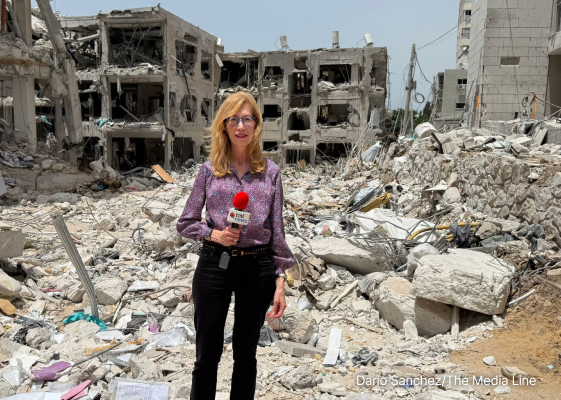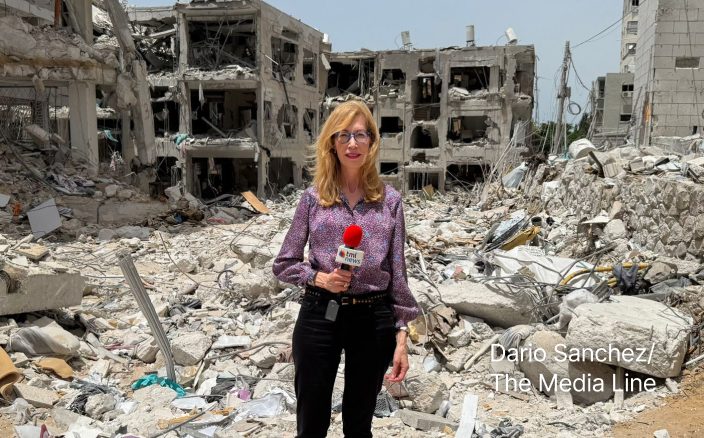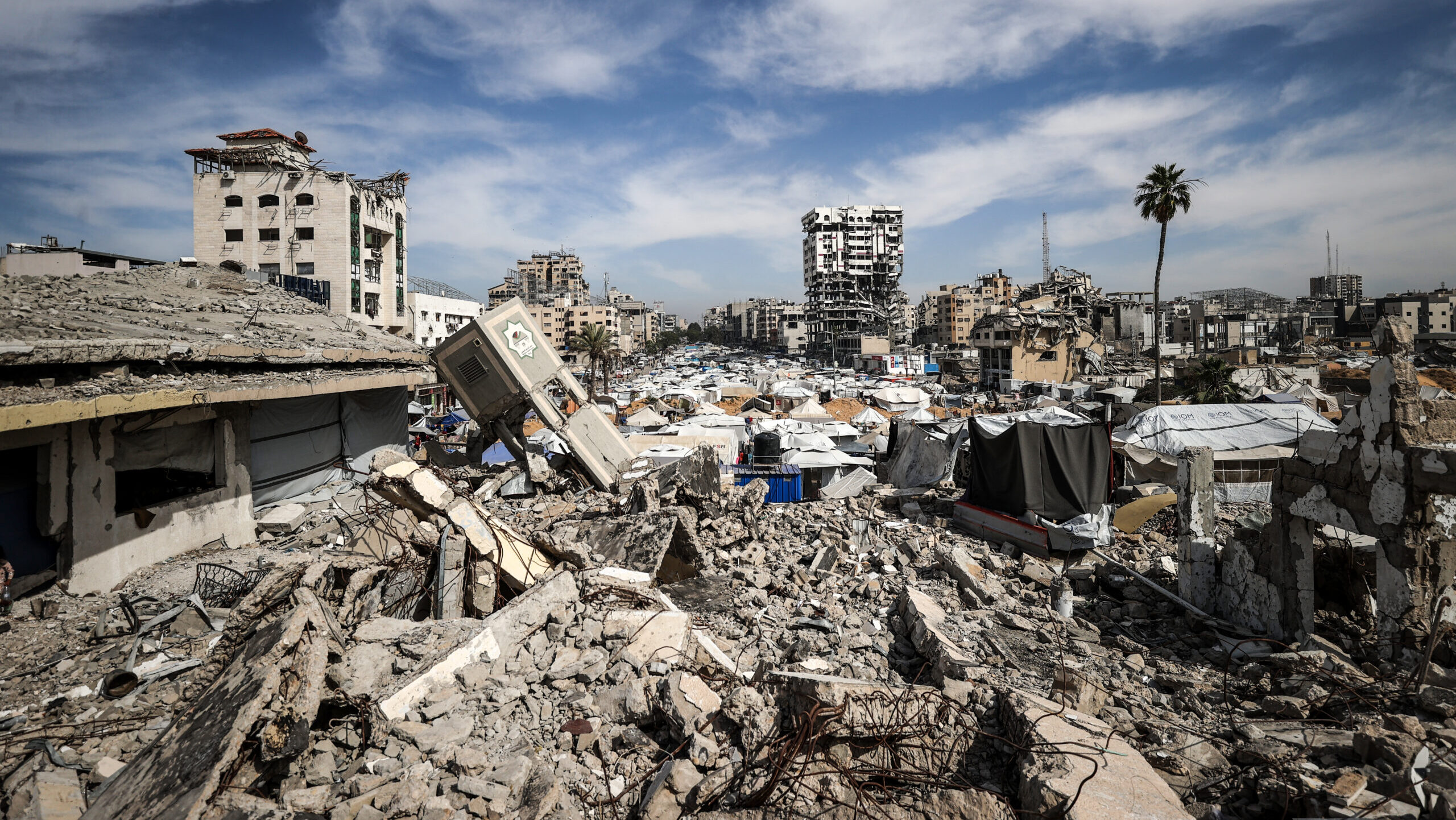Negotiations in ‘Critical Hours’: Will Israel Intensify War or Head to a Ceasefire?
With Gaza reporting over 3,000 Palestinians killed since March and 58 Israeli hostages still held, pressure mounts on Netanyahu to choose between ending the war or escalating further
For over a year and a half, Israel has been fighting the Hamas terrorist organization. Massive amounts of explosives have been dropped on the Gaza Strip, all in response to a massive attack staged by Hamas that stunned Israel on October 7, 2023, and catapulted the Jewish state into its longest war to date. And now, long after the war began, reports over the weekend indicated that talks between the two rivals are in their “critical” hours. The latest push to reach a deal that would see a ceasefire and a partial release of Israeli hostages comes after Israeli warnings that it will ratchet up its attacks in Gaza to pressure Hamas.
It wasn’t the first time the talks had been labeled “critical” and on the brink of either collapse or success.
On Sunday, Israeli media reported that Prime Minister Benjamin Netanyahu’s office released a statement saying the negotiations “were an effort to exhaust all options” and not ruling out an agreement that would end the war.
Some saw Hamas’ return to the negotiating table in Qatar with Israel as proof that the renewed military effort was working.
From Gaza, there were reports that over 150 people were killed in the current round of Israeli strikes on the territory during the weekend. Since Israel broke a ceasefire that ended in mid-March this year, the Hamas-run Gaza health ministry has said over 3,000 Palestinians have been killed by Israeli forces. Since then, Israel has also enforced a strict blockade on humanitarian aid to the territory, with no food, water, fuel, or other goods entering Gaza and its over 2 million people. Humanitarian organizations say Gaza is teetering on the brink of famine. All this is aimed at creating circumstances that will strong-arm Hamas into surrender.
What we are seeing now is the maximum amount of pressure Israel can exert before putting its big plan into play. This plan is much more far-reaching and creates a very credible and massive threat.
“What we are seeing now is the maximum amount of pressure Israel can exert before putting its big plan into play,” Dan Schueftan, director of the University of Haifa’s National Security Studies Center, told The Media Line. “This plan is much more far-reaching and creates a very credible and massive threat.”
On Saturday, Israeli Defense Minister Israel Katz said the Israel Defense Forces (IDF) launched a major military operation in Gaza dubbed “Operation Gideon Chariots.” At the same time, Netanyahu ordered his negotiating team to remain in Qatar for indirect talks with the terrorist group.
Defense Minister Israel Katz said the operation was led with “great force.” Netanyahu has repeatedly promised to increase pressure to destroy Hamas, which has ruled Gaza for nearly two decades. For this purpose, tens of thousands of reserve soldiers have been called up for duty, and many have already entered the Gaza Strip.
“The IDF has begun conducting extensive strikes and mobilizing troops to achieve operational control in the areas of Gaza…this is part of preparations to expand operations and fulfill the objectives of the war—including the release of hostages and the dismantling of the Hamas terrorist organization,” read a statement from the military released Saturday.
The Israeli military is believed to be planning to occupy significant parts of the Gaza Strip, making an effort to push the population to certain centers in which the presence will be eliminated. This would allegedly be the first part of a plan that would see the expulsion, or relocation, of Gazans outside of the territory—a plan that was first brought forward by US President Donald Trump several months ago.
Give the gift of hope
We practice what we preach:
accurate, fearless journalism. But we can't do it alone.
- On the ground in Gaza, Syria, Israel, Egypt, Pakistan, and more
- Our program trained more than 100 journalists
- Calling out fake news and reporting real facts
- On the ground in Gaza
- Covering Israel, Syria, Lebanon
- More than 100 students
- Exposing fake news
Join us. Support The Media Line. Save democracy.


Israel has two choices: Either to focus on releasing the hostages with the hopes that if it gives everything up, they will all return or conquer the Gaza Strip and completely remove the threat of Hamas. For now, it is making progress towards the second option, and it appears to be working.
“Israel has two choices: Either to focus on releasing the hostages with the hopes that if it gives everything up, they will all return or conquer the Gaza Strip and completely remove the threat of Hamas,” Col. (res.) Dr. Hanan Shai, an expert in military and diplomatic strategy at the Misgav Institute for National Security and Zionist Strategy, told The Media Line. “For now, it is making progress towards the second option, and it appears to be working.”
All the while, there are still 58 Israeli hostages being held by Hamas since October 7, 2023. The majority of them are presumed dead, and 23 are believed to be alive.
Israel is divided more than ever before as the army pushes forward on its latest offensive. The debate between those who believe the hostages should be released at any cost and those who believe Hamas must be defeated is a fiery one that has further polarized an already fragmented society. Weekly demonstrations with thousands of participants have called on the government to stop the war immediately in order to secure the release of the hostages.
“It is a fantasy to believe that Israel will ever get all of the hostages back,” said Schueftan. “Hamas knows that the only thing keeping it safe is those hostages, and there is no reasonable price that Israel can pay that will bring all of them back.”
Hamas basically is willing to release all of the hostages in order for it to rebuild itself back to where it was before October 7.
“Hamas basically is willing to release all of the hostages in order for it to rebuild itself back to where it was before October 7,” he added.
Protestors have accused Netanyahu of stalling a deal and not pushing for a full deal because of his political motivations. A deal that would see the end of the war would likely anger his coalition members and may lead to their resignation, toppling the government and plunging the country into an election campaign.
Throughout the negotiations, Hamas has not budged from its position. The terrorist group demands a complete Israeli withdrawal from Gaza with guarantees that Israel will not resume the war effort. This will also include the withdrawal of the IDF from the Philadelphi corridor, a narrow strip of desert land that is on Gaza’s border with Egypt and served as Hamas’ main pipeline for weapons and other means to arm itself.
Since Israel withdrew from the Gaza Strip in 2005, Hamas embarked on a massive project to strengthen itself. This also included a massive network of underground tunnels that allowed it to smuggle weapons into Gaza and hide many of its operatives. Many of the 250 hostages Hamas took into captivity on October 7 were hidden in those tunnels; those remaining are also likely still being held underground.
“A war only ends when the enemy is defeated,” said Shai. “Hamas has not yet been defeated because it still has two of its main assets, the tunnels and humanitarian aid. No matter who controls Gaza after Hamas, the tunnel threat needs to be eliminated.”
Israel is estimated to have destroyed about a quarter of the “Gaza metro”, leaving most of the strategic tunnel network operational and still very much a threat to Israel. The tunnels serve multiple purposes for the terrorist group, including the movement of fighters, storage of weapons, and also the concealment of hostages. Constructed beneath densely populated civilian areas, their presence has severely complicated Israeli military efforts, also drawing them out. Without them, and without the hostages, Israel’s war on Hamas would have been simpler and shorter.
“In order to overturn the underground of Gaza, five to ten years are needed, and only then can the tunnel network be completely dismantled,” said Shai, adding that cutting-edge mining companies and technologies will need to be employed.
For this to happen, Israel needs more time, something Hamas isn’t willing to give. Time is also not in favor of the living hostages, whose situation is believed to be rapidly deteriorating as they spend day after day in the dark underground of Hamas’ tunnel network.
According to Shai, the debate on humanitarian aid and the fact that, barring the latest period, humanitarian aid was allowed into Gaza and much of it reached Hamas instead of civilians, has also elongated the war. For Hamas, it has given more breathing room, and this has made Israel’s effort against the group a longer one.
Throughout the war, Israel has used humanitarian aid as leverage, so far without results.
Upon possible renewal of the flow of aid to Gaza, Israel plans to establish Hamas-free distribution hubs overseen by private contractors to prevent aid from reaching the terrorist organization.
Now, as Israel pounds Gaza with bombardments and ground forces, it remains to be seen whether Hamas will give up its two decades of work. For Netanyahu, he needs to decide whether to seek the release of Israel’s hostages and allow Hamas to continue to rule Gaza. After such a long war, yet another critical intersection has been reached.
What is at stake here for Israel is larger than Hamas. If Hamas, as part of the Muslim Brotherhood movement, can do what it did and then recuperate, it is catastrophic to Israel on a regional level. If Israel stops now, Hamas’s Gaza will be able to rehabilitate.
“What is at stake here for Israel is larger than Hamas,” said Schueftan. “If Hamas, as part of the Muslim Brotherhood movement, can do what it did and then recuperate, it is catastrophic to Israel on a regional level. If Israel stops now, Hamas’s Gaza will be able to rehabilitate.”

